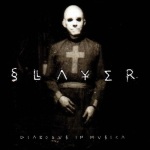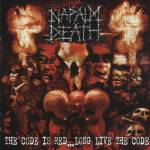Filed under: brutal memoirs, internet and music, popular music | Tags: Anamnesis, Bonus songs, Dark Tranquillity, Digitisation, Eldritch, Exposure, Internetisation, Losers, napalm death, Nebula surface, Slayer, Unguarded instinct, Vader
Music ownership these days, in terms of paying for music and owning the medium that carries the music, is not as relevant as it used to be before the digitisation and internetisation of music. As many have pointed out, today it is more about access rather than ownership; people access music on Spotify, YouTube, Bandcamp, and so forth, rather than owning it. Of course even with digitisation/internetisation there are ways of owning music, through the practice of downloading and storing music on different types of digital repositories. Still, this type of ownership feels quite different to the thing I am used to, that is, owning physical copies in the form of LPs, CDs, and Cassette tapes. One of the ways in which it is different is in terms of the “unity and autonomy” of the cultural product. This is what this post is about.
By “unity and autonomy” I refer to the things that make a cultural product distinct from other cultural products as well as a unified whole. It concerns the age-old question “what are the limits of a distinct body of works”? When does an artist decide that a specific number of songs constitutes an “album”? There are different actors and processes that have conspired to offer practical answers to these questions. The subjection of music to the logic and the laws of the capitalist market is one process, and tradition is another. Most recording artists don’t rely on the record company to tell them that they need something between 8-12 songs to have a”proper” album, they already know this is the case because they are familiar with popular music conventions. In turn, the popular music industry is partially responsible for those conventions.
What crystallises a body of works as distinct is its subjection to the manufacturing process and its reification, its transformation into a product such as an LP or a CD. First of all, there is a physical medium that contains a limited number of songs. Both CDs and LPs secure autonomy by including the chosen number of songs and excluding all other songs. Then there is a cover artwork that symbolically unifies the songs included in the CD or LP in question. Beyond those two important elements there are other things like a consistent production style and a specific band configuration, that construct a given body of works as unified and autonomous. The person who bought Gutter ballet (1989) and Power of the night (1985) by Savatage on CDs knows that whenever she listens to “When the crowds are gone” she listens to a song off Gutter ballet (1989) by Savatage, but when she listens to “In the dream” she knows that she listens to a song off Power of the night (1985) by Savatage.
How do things change with digitisation/internetisation? In a way things are not much different. Songs on online music platforms or downloadable songs are usually organised in traditional album formats. I could search for the Gutter ballet album by Savatage on Spotify, and I could access it independently from the rest of their albums. I could also download the same album and keep it in a distinct folder, separated from all other songs that can also be found in my computer. The folder as well as the information potentially embedded in the mp3 track (e.g. artist, album title, year of release) contribute towards the unification and autonomisation of the product. However, a key difference is that I could delete any of the songs from that folder. I could, for example, delete “Of rage and war” because the lyrics piss me off. I could also “cut” all the Savatage songs from three different albums I have neatly organised in distinct folders and “paste” them all together in one distinct folder titled “Savatage”. That wouldn’t change, of course, the information inscribed on those songs that ascribe them to distinct bodies of works, but still digitisation offers unique opportunities in challenging the unified and autonomous character of music industry products. Other unifying elements, such as cover artwork, lose their effectiveness as well. Of course, someone could say that in the past people would make mix-tapes, and, in that sense, blank cassette tapes and CDs offered opportunities for manipulation, but that didn’t have an effect on the “original” products, the CDs and LPs that were used to make the mix-tape. More things could be said about digitisation and convergence, such as how they effect modes of listening that are less demanding than, for example, sitting in your living room and handling big and sensitive media such as LPs and turntables, and the effect this has on perceiving an album as unified and autonomous.
The thing that prompted these thoughts was listening to Dark Tranquillity‘s excellent song “Exposure”. I first listened to this song during the summer of 1999 when a friend of mine bought the digipak version of the newly released Projector album. By that time I had gotten over Swedish melodic death metal, and I was more into brutal death metal such as Immolation, Broken Hope, Sinister, and Vader. But even by Swedish melodeath standards, I found that album extremely disappointing, and to this day it’s my least favourite DT album. However, in the end of the album there was a hidden track that we played non-stop for days. That song was “Exposure” and it was excluded from the regular versions of the album.
That fact made me reflect on how annoyed I was every time I bought an album and I realised that there was another version that included songs that my version of the album did not include. I then thought that this wouldn’t be much of a problem in the contemporary world, where some listeners are less loyal to physical cultural commodities. For one thing, the folder on one’s computer titled “Dark Tranquillity – Projector” is probably not as meaningful a unit as a CD or an LP. Moreover, the bonus track can be found and downloaded and subsequently added to the folder. Due to the resistant to modification character of CDs and LPs, an artifact without the bonus tracks was for ever condemned to be without. In the present historical period in advanced hyper-consumerist capitalist societies do “special editions” with bonus songs have the same appeal that they used to in the 1980s or 1990s, and for those people who exclusively use the internet to access music do concepts such as “bonus track” or “album” have any meaning?
In most cases, I think that bonus tracks are not on par with the rest of the songs on an album, but in some cases they are amazing. I will now finish this post with five examples of extraordinary bonus tracks that in some cases are better than all the songs in their respective albums.
 1. Dark Tranquillity – Exposure (Projector)
1. Dark Tranquillity – Exposure (Projector)
“Exposure” is hands down my favourite song off Projector (1999). The only other song that comes close is “On your time”, which has an unbelievable ending. The change that DT underwent during that period, and which to a large extent defined their style, did not go down very well with me, especially the extensive use of clean vocals and keyboards, and the slowing down of pace. “Exposure” is a song that could have easily been on The mind’s I (1997), an album that I’ve loved non-stop since it came out. It is fast, it has a perfect main riff and melodies, and Anders’ drumming is mindboggling.
 2. Slayer – Unguarded instinct (Diabolus in musica)
2. Slayer – Unguarded instinct (Diabolus in musica)
Diabolus in musica (1998) and God hates us all (2001) are my two least favourite Slayer albums, but if I had to choose one that I like better I would go with Diabolus. There are some awesome songs on this one, including “Perversions of pain”, “Screaming from the sky”, “Scrum” and “Bitter peace”. However, the Japanese edition of the album includes “Unguarded instinct”, the hands down masterpiece and best song on the album, in my opinion. This song has some of the best riffs and one of the best choruses Slayer ever came up with, and Bostaph’s performance is phenomenal. At least the version that I own includes another bonus track which is also quite awesome, the dark and menacing “Wicked”.
 3. Napalm Death – Losers (The code is red…long live the code)
3. Napalm Death – Losers (The code is red…long live the code)
Napalm Death have always released special editions of their albums with bonus songs unavailable in regular editions. Most of those bonus songs are awesome, because ND is awesome, but usually they don’t stand out. However, on this specific case I think that it was a shame the song “Losers” was not included in regular editions of The code is red… as it is an extremely powerful and memorable track, from the catchy drum intro, to the driving beat and the various tempo changes. This song was included on the digipak version, but unfortunately not on the limited edition LP version.
 4. Eldritch – Nebula surface (El nino)
4. Eldritch – Nebula surface (El nino)
El nino was the album that introduced me to Eldritch back in 1998, a band that I respect a lot although I don’t like all of their albums. Still, their powerful take on progressive-power metal always impressed me, and to this day I don’t think I have listened many other bands that manage to combine more conventional melodies with aggressive song-writing (another band that comes to mind is Rage) as effectively as Eldritch. The limited edition CD I own has this hidden track in the end right after the monumental homonymous song, and it is among my favourite songs on this album.
 5. Vader – Anamnesis (Black to the blind)
5. Vader – Anamnesis (Black to the blind)
Black to the blind (1997) is in my opinion the last great Vader album. When it first came out me and my friends were driven to insanity during endless hours of listening to the album back-to-back and headbanging violently. Unfortunately, the song “Anamnesis” is missing from our version of this great album, but is included in the Japanese version. At least it was included in the Kingdom E.P. too. This song is characterised by sheer intensity, phenomenal drumming courtesy of Doc (a death metal innovator), and an awesome start. Without a doubt it’s one of the very best songs on the album.
2 Comments so far
Leave a comment

[…] is a follow-up to a post I wrote about three years ago, a post I really enjoyed thinking about and writing. This post too is […]
Pingback by Perfect bonus songs, imperfect albums, and the internetisation of popular music #2 | overground scene May 25, 2019 @ 8:08 am[…] the years, I have experienced many albums as incomplete cultural artifacts. In previous posts (read here and here) I have discussed how that was the result of missing bonus songs. Another grievance I had […]
Pingback by Incomplete albums, song-lyrics, and media technologies | overground scene July 9, 2019 @ 7:16 pm